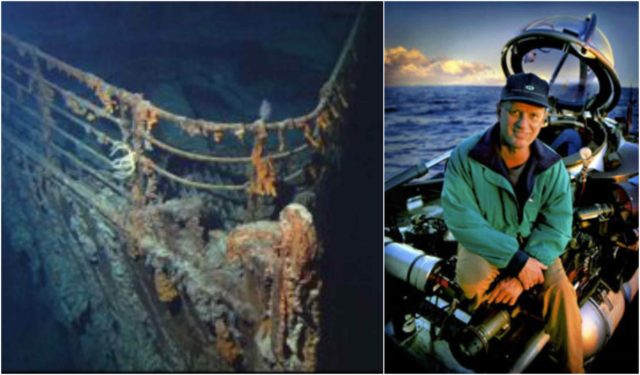
Well, in a quiz question there is a much bigger possibility to guess the name of the men who first landed on the moon, but we hardly know anything about the man who made his discoveries in the other direction – deep to the bottom of our Earth.
Robert Ballard has been intrigued with the secrets of the ocean since he was a kid. Later in his life he was the man who discovered the wrecks of the aircraft carrier USS Yorktown, John F. Kenedy’s PT – 109, the German Battleship Bismarck, the nuclear submarines The Thresher and The Scorpion and of course – the wrecks of the RMS Titanic in 1985.
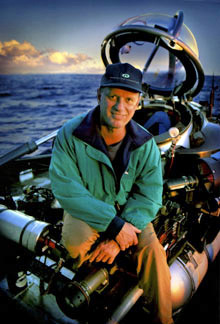
As a matter of fact, he was interested in discovering the wrecks of Titanic much earlier, when he proposed to the Navy with his new deep sea underwater robot craft Argo and asked them to finance the search of the big ocean liner. At the time, the Navy was not interested in this proposal, but they certainly were interested in finding out what happened with their missing submarines the Thresher and the Scorpion and concluded that Argo was their best chance to do it.
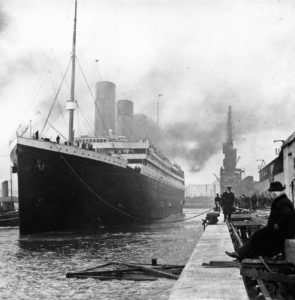
The USS Scorpion was one of the four mysterious submarine disappearances in 1968, the other three being the Soviet submarine K-129, the Israeli INS Dakar and the French submarine Minerva. None of these cases was explained in detail and after the discoveries of their wrecks, there were many theories about the losses.
The sea was hungry that year.
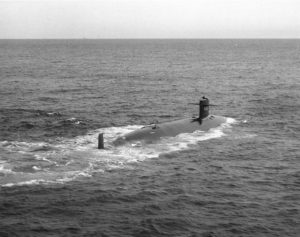
However, a compromise followed – Ballard went on a top-secret mission for the Navy to find what happened with the Thresher while Titanic was his cover story.
Well, Ballard IS the men who discovered the wrecks of Titanic, but there were many others who tried before him and contributed somehow to its discovery.
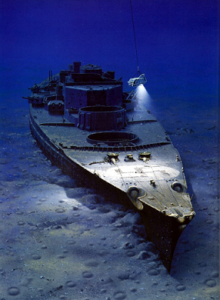
There were many proposals for rescuing what was left of the boat. Right after the accident, the families of several wealthy victims of the disaster – the Guggenheims, the Astors, and Wideners – formed a consortium and contracted the Merritt and Chapman Derrick and Wrecking Company to raise Titanic. The proposal was soon dismissed as impractical due to the lack of appropriate technology for deep sea explorations as well as the outbreak of WWI.
The lack of knowledge for oceanology led the company to consider dropping dynamite in order to dissolve the bodies of the victims and prevent them from floating on the surface. They finally gave up the idea after oceanographers suggested that the extreme pressure would have compressed the bodies into gelatinous lumps.
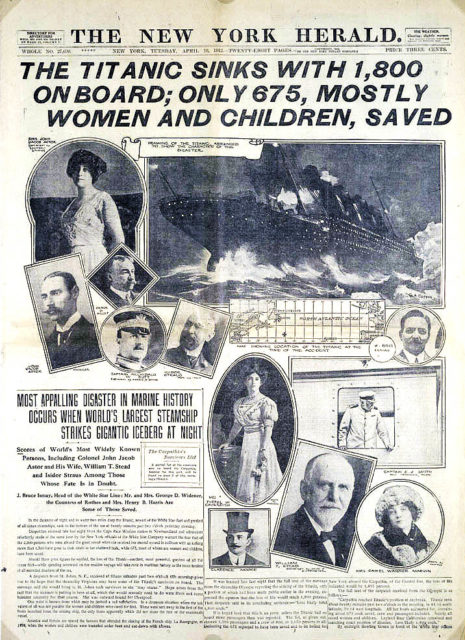
Later, in 1978 The Walt Disney Company and National Geographic magazine considered mounting a joint expedition to find Titanic, using the aluminum submersible Aluminaut and even though it would have been successful from a technological point of view the plans were abandoned for financial reasons.
There were two more initiatives for finding the Titanic – one by the British billionaire financier and tycoon Sir James Goldsmith who wanted to use boat’s popularity in order to promote his newly established magazine NOW! and another one by an electronics repairman from Coral Gabels, Florida – Fred Koehler whose aim was finding the diamonds, rumored to be contained in the purser’s safe. However, both initiatives failed due to financial reasons.
The most interesting of all unsuccessful attempts in finding Titanic was the expedition that set off on the 17th of July, 1980 from Port Everglades in Florida, sponsored by the Texan oilman Jack Grimm, raising millions of dollars and enticing reputable scientists to participate in the effort, arming them with advanced sonar equipment to sweep the sea floor for evidence of Titanic’s final resting place. Grimm obviously deeply interested in mysteries, legends and myths had previously sponsored expeditions to find Noah’s Arch, the Lock Ness monster, Bigfoot and the giant hole in the North Pole predicted by the pseudoscientific Hollow Earth hypothesis. The attempt almost failed when Grimm introduced the team of scientists to his friend and a new consultant – a monkey called Titan, which was trained to point at a spot on the map to supposedly indicate where Titanic was. The scientists issued an ultimatum: “It’s either us or the monkey.” Grimm preferred the monkey but was prevailed upon to leave it behind and bring the scientists instead.
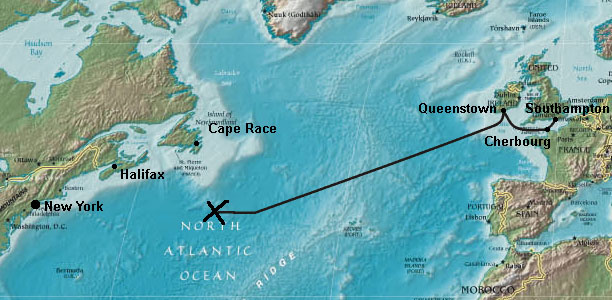
However despite Grimm’s efforts in the discovery, it was his rival researcher Robert Ballard, described by some as Grimm’s most “aggressive opponent,” who got all the credit for finally finding the sunken ship in 1985, its massive bulk torn into two pieces after its fateful iceberg strike.
A sad story for Grimm, but a fortunate one for Ballard. So, today Ballard has all the credit for it, but it’s not like he doesn’t deserve it. But it’s not like all of them weren’t passionately dedicated and didn’t contribute to the discovery of the ship.
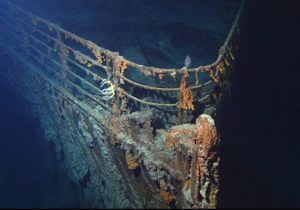
And back to The Man – Ballard is a former US Navy officer and professor of oceanography at the University of Rhode Island. He is also a powerful storyteller and passionate scientific educator. He tells stories about the undiscovered world beneath us, in the oceans and encourages its further explorations.
“We went to the moon, played golf out there before we went to the largest feature on our planet…Most of our planet does not feel the warmth of the sun. Most of our planet is in an eternal darkness” – says Ballard in his TED talk.
He passionately talks about the scientific, archeological findings and “the deep sea is the largest museum on Earth. More history than all the museums combined”.

He was in the first team of humans to view the deep-sea vents and to understand how life can not only survive passionately these deep black waters, under extreme pressure and at extreme temperature. He founded the Institute for Exploration and has pioneered distance learning in classrooms around the world. Through his JASON Project, 1.7 million students a year join scientists virtually as they experience the thrill of exploration and discovery.
“Mr. Ballard has long been blessed with the special luck of a successful explorer as well as the special knowledge of a leading scientist.” — New York Times
His contributions to our scientific knowledge of the ocean are just awe-inspiring.
